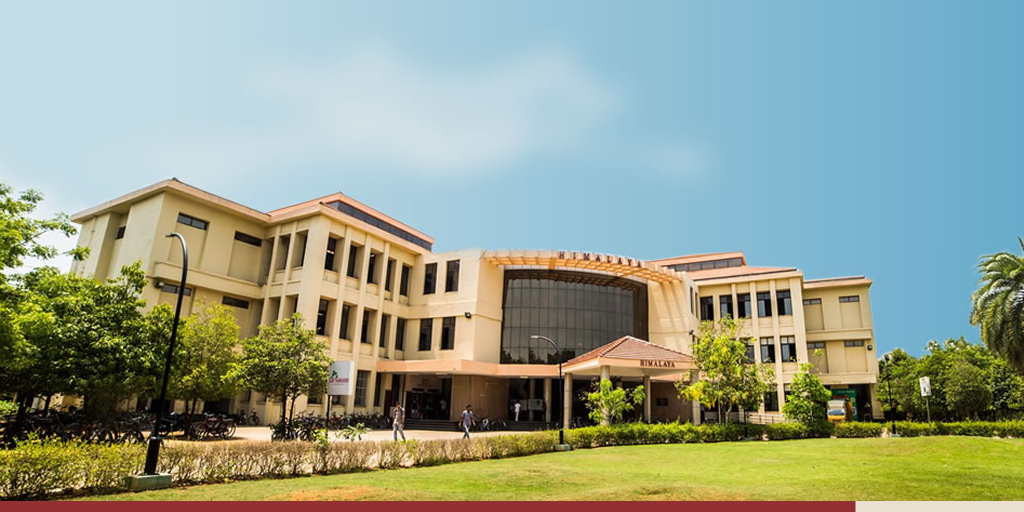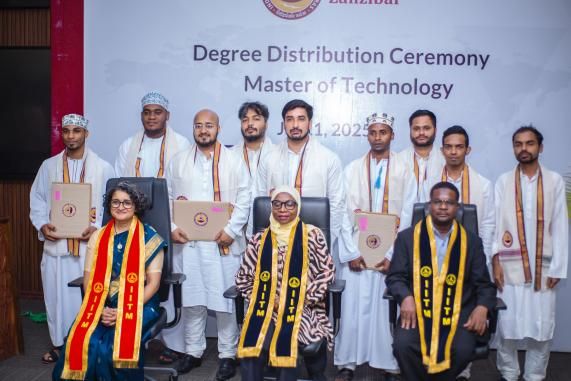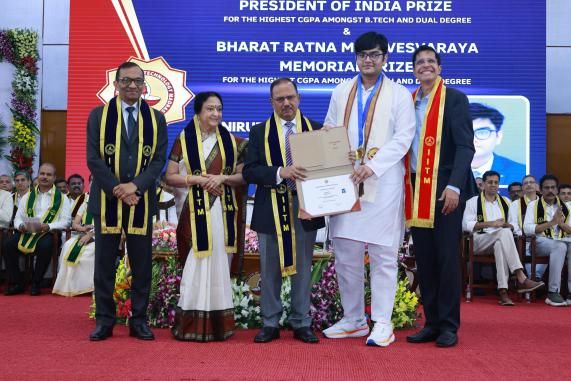IITM Class Reunion Fundraising 2018-2019
//Article

The trees looked greener than we remembered, there were a few newer buildings, but the friends were familiar, just a tad wiser (and older!) than we were at IIT Madras. I recently returned from the 40th year Ruby Reunion of our graduating Class of 1978 and, at the urging of classmates and other alumni, I am sharing our experiences with the hope that future classes will be similarly inspired.
The IITM Alumni Office puts up a great reunion event on campus between Christmas and New Year’s for alumni celebrating anniversary numbers 5, 10, 15, 20, 25, 30, 35, 40, 45 or 50 of their graduation (pass out, as we say J). We had a wonderful time at the reunion visiting the campus and reconnecting with old friends and also working together to raise a reunion gift towards our alma mater to mark our gratitude. With the support of a small group of my classmates, I led the fundraising efforts for my class. Happily, our initiatives exceeded our initial expectations.
Having served on the Boards of a few nonprofits including Pratham USA’s SF Bay Area Chapter and the IIT Madras Foundation, I have found that nonprofit fundraising efforts have common themes that played out in our reunion group effort. I also spoke to reunion class leaders from 1993, 1983 and 1992 and have summarized some of their experiences in addition to my own. If you are considering being a reunion class leader for your upcoming reunion, here are some things to know.
1. Why give?
Donors give because they have an intense emotional connection to a cause. For example, Sankara Eye Foundation talks about Giving the Gift of Vision; Doctors without Borders promises to provide lifesaving medical care to those most in need; Pratham’s mission is Every Child in School and Learning Well. In each case, donors are moved by the prospect of changing someone’s life by intervening at a critical time in the beneficiary’s life or by the opportunity to build towards something bigger than themselves.
For us IITM alumni, there is already a strong, emotional connection with the Institute where we spent five formative years. However, much has changed on campus since the time we were there. During the Reunion kickoff on campus, we invited the Director, Bhaskar Ramamurthy, and the Dean of Alumni Affairs to reacquaint alumni with the vision of the Institute and emphasize the progress that has occurred since our college days.
IITM’s aim is to become a world class research institution, ranked in the Global Top 50. We are already the #1 ranked engineering institution in India, according to the NIRF (National Institutional Ranking Framework) by MHRD
(Ministry of Human Resources Development), Government of India. Part of this vision is to apply the research excellence to local problems from hydrology to clean energy to creating smart cities.
We talked about the times way back, when a professor’s monthly salary was comparable to the postage it took to mail papers in to journals and conferences. There used to be an internal committee to review papers to evaluate if they were worth the dear postage! Technology has made communication cheaper, research can now be presented widely, and professor’s salaries have gone up. So, there is no longer a need to worry about postage or self-censorship of research. But even today, a young professor’s success is dependent on starter grants to kickstart problem solving, fund externship opportunities to collaborate with faculty in the US and Europe and money to travel to and present at conferences. These seed investments that are outside of the normal budget can change the trajectory of a young professor, as she makes her way through academia.
2. Coalescing around an idea
Our class was inspired by IITM’s ambitious vision to build excellence and we also learnt that there are four major areas where alumni donations can provide much needed resources: faculty development, student life – improved health, sports, arts are examples, infrastructure improvements and the budding innovation ecosystem. Our challenge was to identify one idea that we could all rally around, so that the class gift made a measurable difference.
The Class of 1993 which was raucously celebrating its 25th reunion on campus in parallel, decided to be data driven and ran a survey on which ideas had the most currency (pun intended!) amongst the class.
The IITM Development Office has many projects or endowments ideas for a class to consider and costs for these gifts range from $100K to $10M. In addition to identifying an area we wanted to support, we had to figure out a
number that we could donate as a group. We had to iterate a bit to get there, but in the end, settled on $500k across the US and India as our target and we decided to support Faculty Externships.
3. The Strategy (Who, When and How)
Having answered the what and the how much, we then had to figure out Who would give, When and How best to reach them. The Reunion is a perfect time to get everyone’s attention as they are reconnecting with friends and the campus. So, the first step is to drive attendance to the Reunion.
In a traditional nonprofit, we would define prospective donors, obtain relevant lists and databases, run them through tools like WealthEngine to segment the potential donor base and develop marketing strategies to reach them. These could be events, email campaigns, one-on-one meetings etc. depending on whom we are trying to reach. In most campaigns, 40% of the campaign goal is donated by 4-6 contributors and the rest comes from a wider base.
Our potential donor base is the alumni from a particular reunion class. The hardest part is getting the right data, what with our expanded initials, modified first and last names, and 40 years of jobs, homes and moves. Thankfully, Paulette Altmaier (’78) had already done a yeoman’s job leading an effort across IITM, IITM Foundation and IITMAANA to develop a robust database of ALL alumni in North America and we had emails for nearly 90% of the class. We chased down much of the rest via social connections and WhatsApp.
Among these, we identified a core group of 6 classmates who we first approached to consider writing checks of $50K (or Rs.25L) or more. We discovered that having an overall goal of $500K and an initial commitment of nearly $175K from the core group made the campaign more achievable to the rest of the class. To spur others on, our core group decided to add a matching gift of $175K that could be drawn down by the rest of the class’ contributions.
4. The Solicitation
The old adage in nonprofit fundraising is that people give to people. So, even as we identified a core group of large donors, we simultaneously figured out who amongst us had a strong enough connection with the prospect to ask.
Between May and October, we reached out in 1 on 1 conversations with a core group of donors to get their commitments ahead of the general class fundraising. Our class met on campus and then we all proceeded to the Andamans for a longer retreat. Sitting in a circle, in an unbelievably picture-perfect beach house, we discussed how to make sure we max out on those pesky matching grants. While we asked for specific gift and matching amounts, we were careful to reiterate that gifts at any level are welcome. We honored every gift and were heartened to see 70% of the class attendees contribute.
Another reunion class decided to ask the core group to consider giving $100k (or 50L) and $50k (or 25L) and once that group was in place, made a broader class ask of $10k (or 5L) to get to their goal of $1.75M. Since they were a larger group, they organized WhatsApp groups by hostel in addition to the whole class channel. Core donors also turned out to be the best people to ask their hostel mates to give and the impetus to act came during reunion while they were on campus. Corporate matches are a big source of funds and often helped donors to round up to a higher number.
In your own reunion class groups, consider what would be the most authentic way to ask your core group as well as the broader class. While many of us are inexperienced in and even a bit shy about asking for money, it turns out that most donors are thankful to the class leaders for helping them give. Our alumni have tremendous goodwill towards campus and what is typically missing is a channel to give effectively. A well-organized reunion campaign strikes many of them as an opportunity and not as a burden.
5. The Stewardship tail
We are lucky to have generous, well-intentioned donors among our alumni and the reunions offer a forcing function to spur action. Once we receive donations, it is incumbent upon us as class leaders to also make sure there are mechanisms in place to let the donors know the impact of their donations. Where was the money spent, what are the results, who are beneficiaries, how did it change their lives? Being used to such reports from many US non-profits, IITM alumni demand similar reports from their alma mater and transparency and accountability post-donation are critical.
The reunion fundraising team should work with the IITM Foundation and the IITM Development Office to ensure there is follow-through.
And, most importantly, reconnect with your friends and classmates and have fun!
IITM Foundation is working with the IITM Development Office to establish mechanisms for ongoing communications to nurture donors and to provide regular reports on beneficiaries, results, impact etc. As a board member of the IITM Foundation, I am now focused on donor stewardship more broadly and welcome your ideas on this subject.


